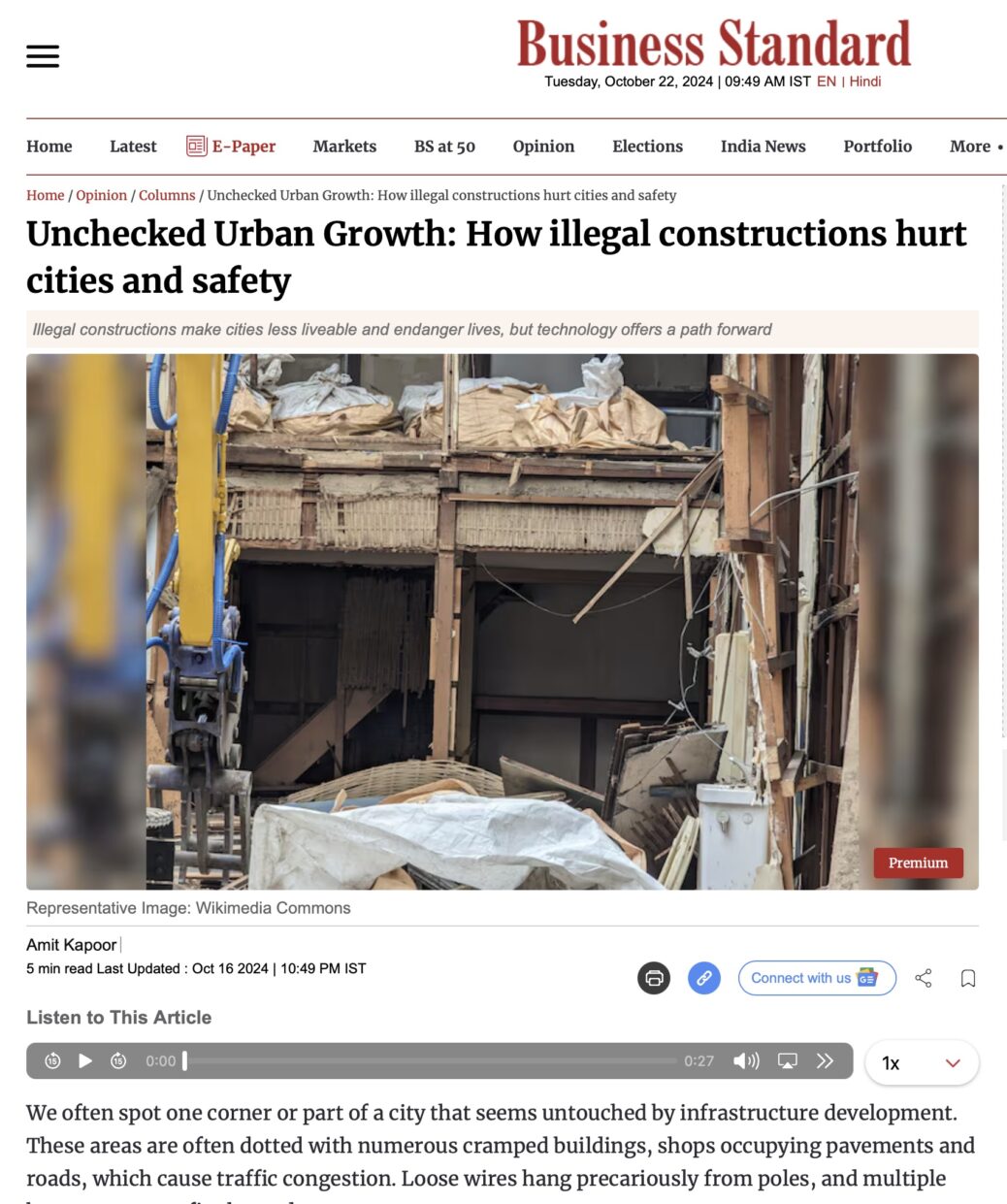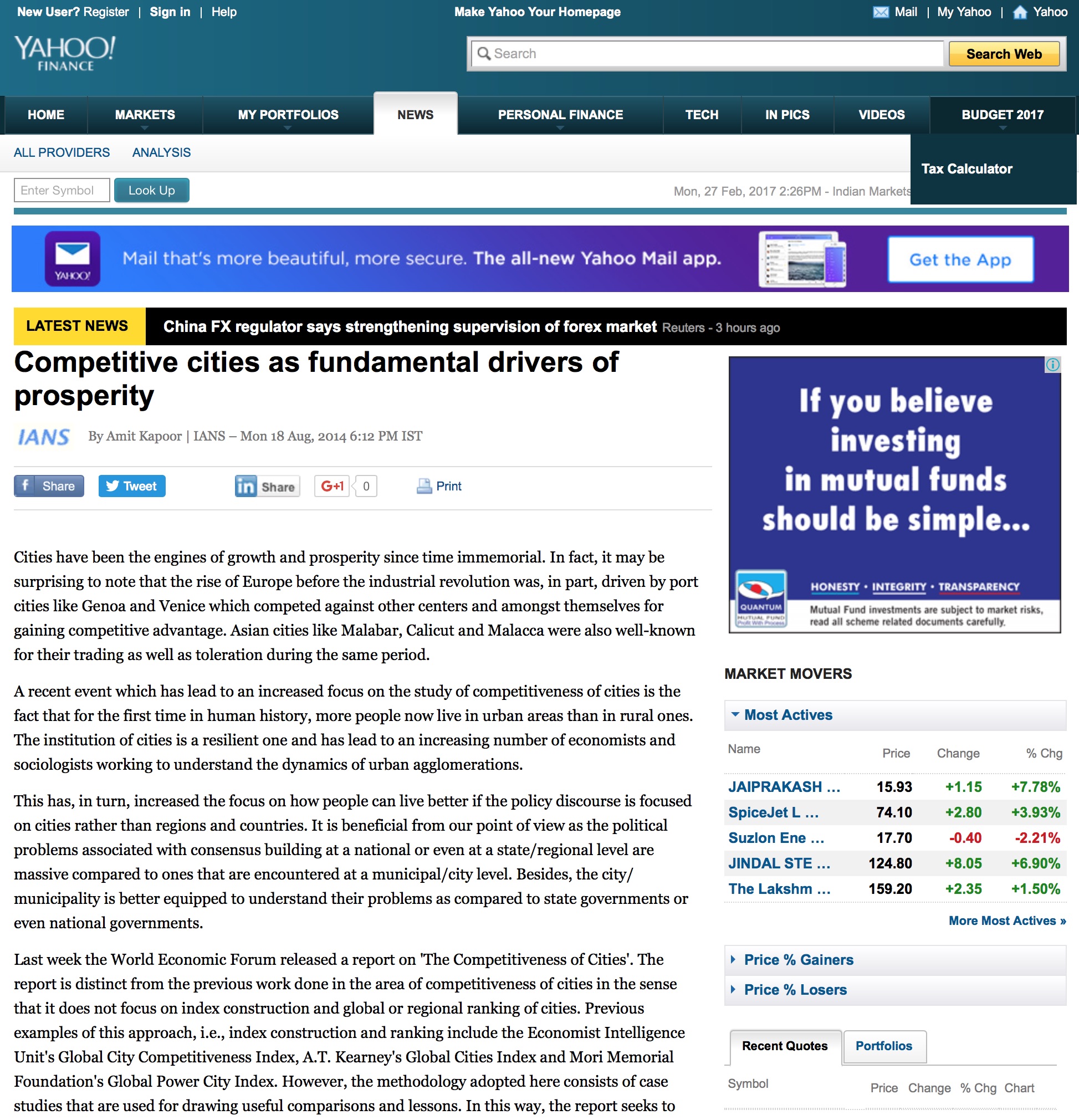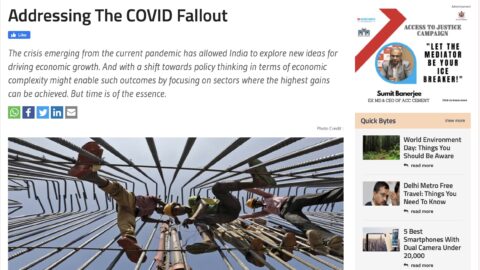By Amit Kapoor and Inputs by Jessica Duggal
We often spot one corner or part of the city that seems untouched by any infrastructural development. These parts of cities are often dotted by numerous cramped buildings, shops occupying pavements and roads causing traffic, wires hanging loosely on poles, and multiple basements that are fire hazards. These areas acquire notorious reputations due to a host of illegal constructions that hamper the everyday lives of the residents. The problems that unregulated and illegal constructions introduce in an urban space are not only specific to the management of urban resources and governance but also negatively impact the ease of living and social harmony of the urban dwellers. This year alone saw multiple unfortunate accidents that occurred solely due to illegal and unauthorised buildings – in July, three people died as an unauthorised four-storey building collapsed in Mumbai; in March, twelve people succumbed to death as an illegal building collapsed in Kolkata. In the National Capital, three young persons drowned as an illegal basement flooded due to heavy rains. These constructions have grave environmental impacts, decrease the general quality of life, and, in extreme cases, result in irreversible tragedies like loss of life. The magnitude of the crisis is not small and cannot be ignored for long, and it is imperative that governance of these constructions is made stricter.
These kinds of constructions have very clear economic and environmental implications. For one, loss of tax revenue becomes a major problem as these properties are not registered. Second, as illegal constructions lead to unplanned expansion, they create pressure on existing infrastructure and resources like roads, electricity, water, etc., incurring extra costs when extending these services. Further, demolition of those constructions leads to added fiscal burden along with obvious environmental harm. Moreover, these properties also lack proper insurance, making owners or residents vulnerable to significant financial losses. The land on which these properties are constructed also loses its economic value, especially in the case of legal disputes or action. Additionally, it hampers movement in cities. As these constructions encroach upon roads and pavements, streets become narrower for vehicles to pass through, thereby increasing congestion. On a larger scale, as more unauthorised colonies emerge, it tends to affect road connectivity, increasing traffic.
With the scale at which urbanisation is occurring in India, and the sheer volume of people who now live in cities, management of space, land use and public urban resources becomes an important task. Constant regulation and monitoring through routine land surveys, updating records by the municipal boards and mainstreaming the use of innovative techniques like satellite imaging is needed. In fact, many cities in India, like Mumbai, Noida, and Bhubaneshwar, already use satellite images and geographical information systems to monitor unauthorised land use, constructions and encroachments. Globally, cities like Sao Paulo (Brazil) and Istanbul (Turkey) have used drone technology to monitor inaccessible areas and identify illegal or unapproved constructions. Recently, European cities like London and Barcelona have been experimenting with machine learning algorithms and AI to analyse historical construction data and images to identify patterns of illegal constructions. Interestingly, the Brihanmumbai Municipal Corporation (BMC) has also launched an app where users can report illegal constructions along with other issues to the municipal corporation.
The environmental cost of illegal construction cannot be ignored. Often, these structures are erected without regard for zoning laws, often encroaching on protected areas, green spaces, or floodplains. This leads to environmental degradation and exacerbates the risks posed by natural disasters. For instance, buildings constructed on unstable land or in flood-prone areas increase the vulnerability of entire communities. To curb this, authorities must firmly enforce zoning laws and use technology like satellite imagery and AI to monitor and detect unauthorised developments in real time. Equally important is the need to educate communities about the long-term environmental risks of illegal construction and to create incentives for sustainable urban planning. Green building codes should not just apply to elite high-rises but should be enforced across all construction sectors, ensuring that every new structure built is environmentally responsible.
As we prepare ourselves to witness urbanisation at unprecedented rates, we need to ensure that illegal constructions and unauthorised land use are curbed. Our strategies need to rest on a three-pronged pillar of economic, environmental and social sustainability. The role of local governments is pivotal in enforcing laws, cracking down on corruption, and ensuring that illegal constructions are swiftly dealt with. Urban Local Bodies (ULBs) must update the zoning and building by-laws, making them more transparent. By incorporating online systems for approvals, inspections, and grievance redressal, we can create a governance framework that is both accountable and accessible. A culture of civic responsibility must also be cultivated, where citizens understand that the rule of law benefits everyone. Civil society can play an active role in reporting unauthorised constructions, but this requires trust in the system and assurance that these reports will lead to real action.
The article was published with Business Standard on October 16, 2024.
























